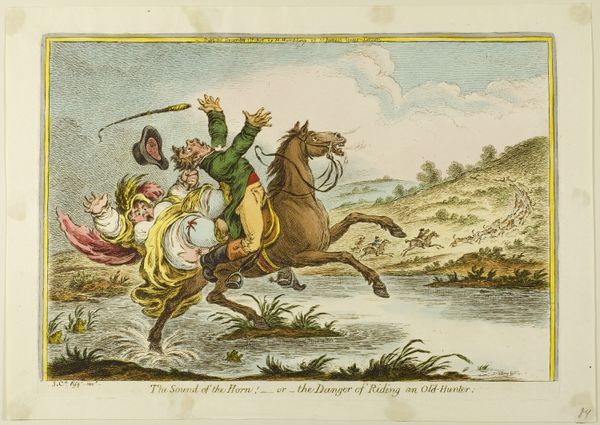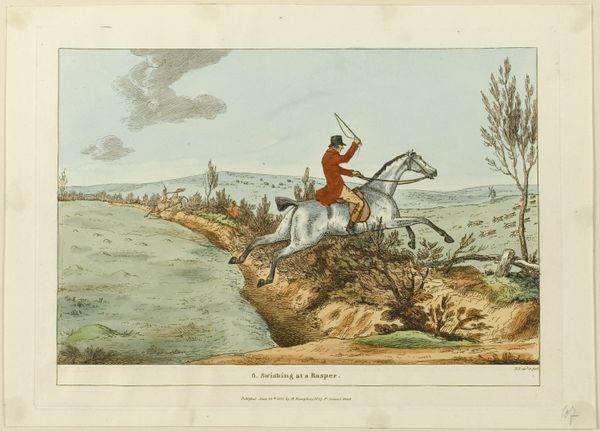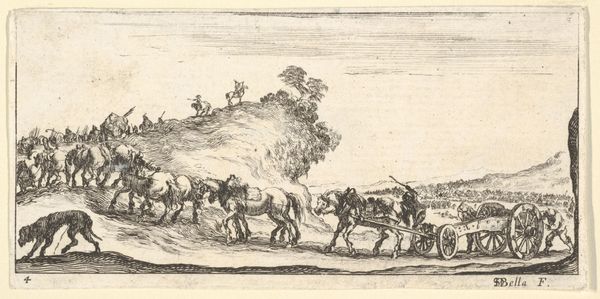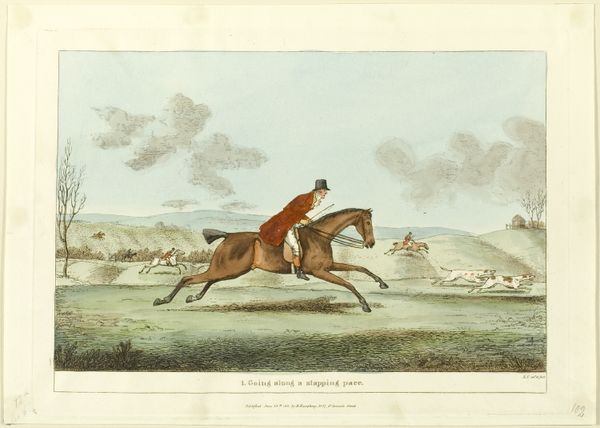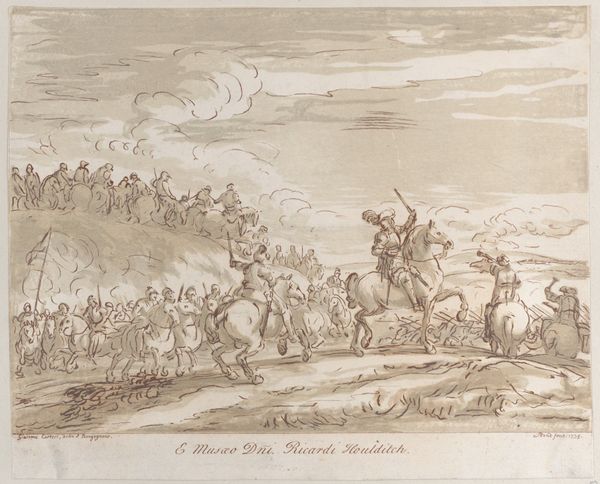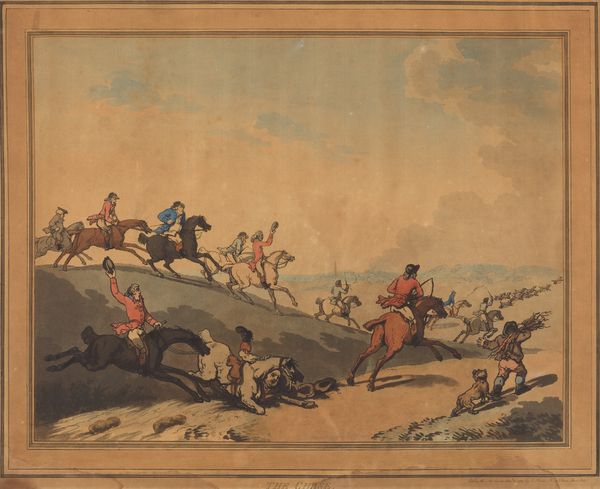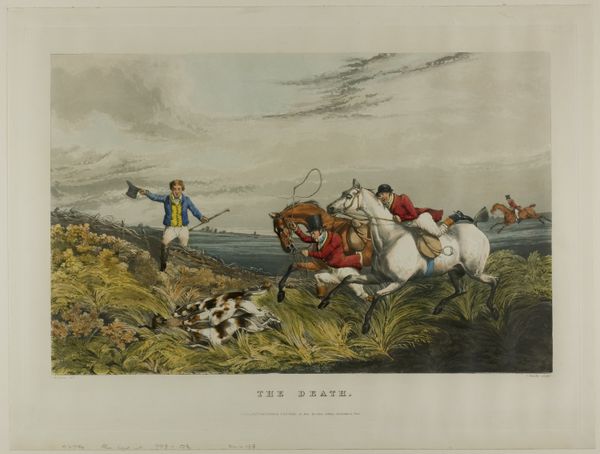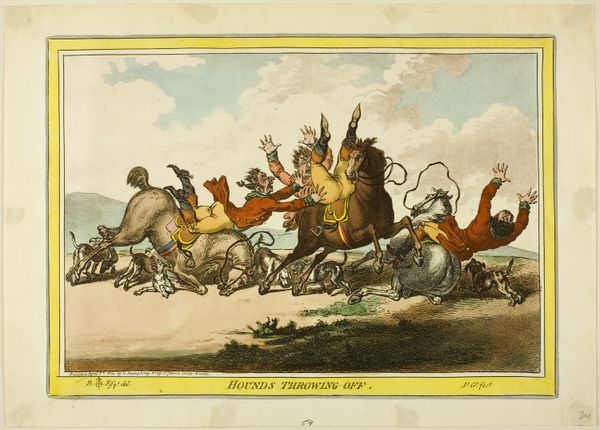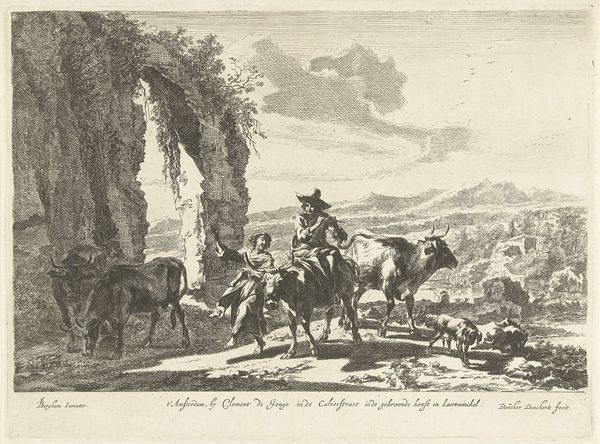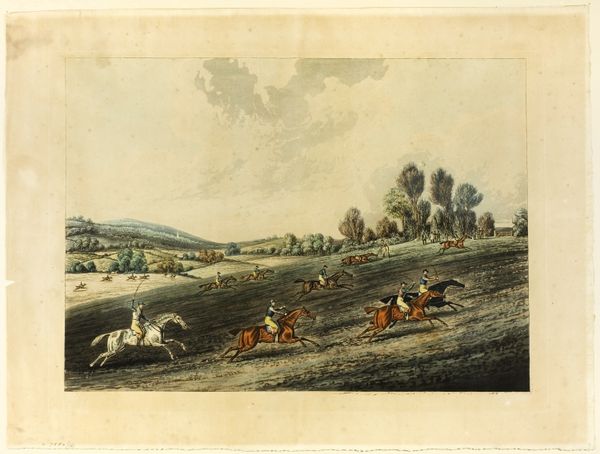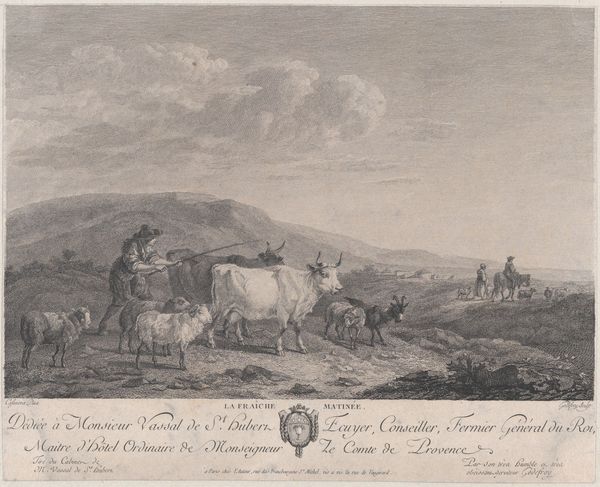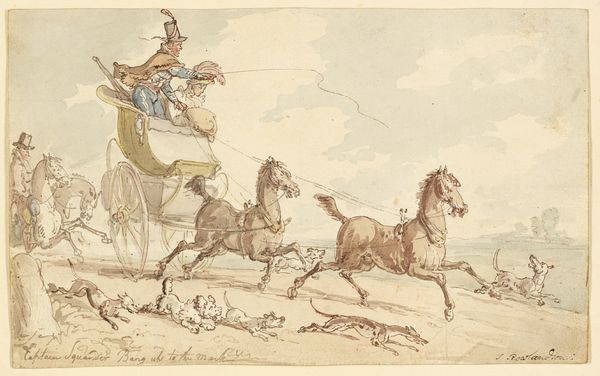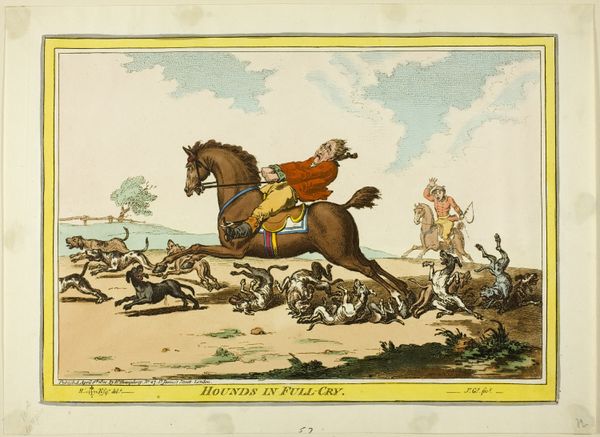
drawing, coloured-pencil, print, etching, paper
#
drawing
#
coloured-pencil
# print
#
etching
#
caricature
#
landscape
#
paper
#
coloured pencil
#
genre-painting
Dimensions: 308 × 385 mm (image); 312 × 387 mm (plate); 333 × 415 mm (sheet)
Copyright: Public Domain
Curator: What a chaotic scene! "Posting in Scotland," possibly from 1805 by James Gillray, really captures a sense of… disarray. It’s part of the Art Institute of Chicago’s collection. What are your immediate thoughts? Editor: Utter pandemonium. It seems that Gillray is commenting on travel and the social hierarchies of the time. Look at this overturned carriage and the people scattered about, clearly not having a good time. The mode of transportation—or attempted transportation—becomes a potent symbol. Curator: Absolutely. The work is an etching with colored pencil on paper, a combination that allowed for detailed line work and subtle tonal variations. Gillray was known for his satirical prints, often skewering the political elite. Here, it appears he’s aiming his wit at the gentry's attempts to navigate the Scottish landscape. Notice the local laborers—their engagement in labor appears essential to this disastrous scene. Editor: The fact that this is a print also speaks volumes. It means that this critique, this humorous depiction of class and transportation woes, was widely disseminated. This wasn't an oil painting meant for a single aristocratic collection; this was meant to be consumed and discussed by a wider public, contributing to a growing awareness of societal inequalities and, perhaps, to the romanticization of landscape. The use of color to highlight details, like the plaid of the seated figure or the vibrant chaos of the carriage mishap, drew the eye and amplified the scene's impact. Curator: And that impact would’ve resonated with a society increasingly aware of its own internal class dynamics, especially through modes of consumption and what was consumed in visual imagery. The availability of such a work speaks to the development of printmaking as an industry, capable of quickly reproducing and distributing imagery relevant to topical debates. This is an amazing window into material culture, wouldn't you say? Editor: Without question! It's not just about aesthetics; it is very much embedded in the socio-political conditions of its time. Gillray harnessed the reproductive power of printmaking to critique the structures of society. Curator: Considering this satirical portrayal alongside its tangible presence and widespread circulation gives us valuable insight into art's role in shaping and mirroring society's values during the 19th Century. Editor: Indeed. "Posting in Scotland" provides a material record of its time as well as the ways it functioned as an object circulating through specific channels of distribution.
Comments
No comments
Be the first to comment and join the conversation on the ultimate creative platform.
